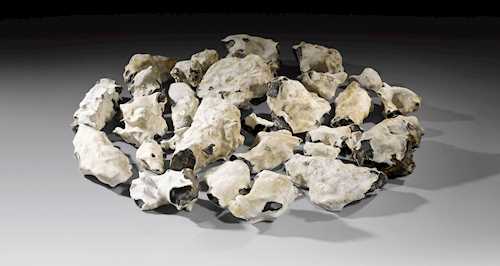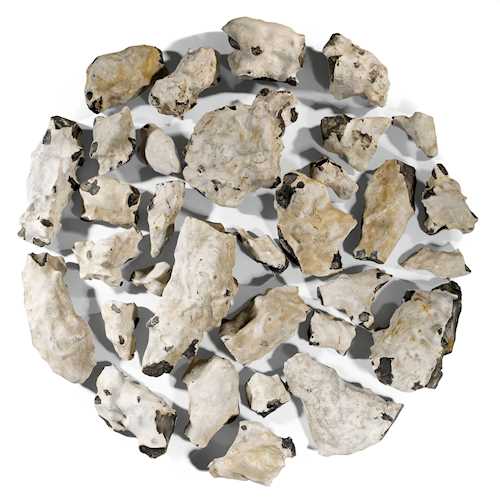
Lot 3476* - A201 PostWar & Contemporary - Thursday, 30. June 2022, 05.00 PM
RICHARD LONG
(Bristol 1945–lives and works in Bristol)
Small circle of flint. 1984.
32 stones, placed in a circle.
Diameter 86 cm.
With the artist's confirmation of authenticity and installation instructions, Bristol 1984 (copy).
Provenance:
- Galerie Reckermann, Cologne.
- Purchased from the above in the 1980s by the present owner, since then private collection Switzerland.
Exhibitions:
- Rottweil 2012, STEINzeit Skulptur & Zeichnung. Galerie der Kreissparkasse, 3 July - 26 August (with colour ill.).
- Kleve 2001, Richard Long. Museum Kurhaus Kleve, 26 June - 23 September (longtime loan).
“My work is real, not imaginary, or purely intellectual. It is about real stones, real time, real action. I work with the world as I find it.” Richard Long
Richard Long is considered one of the pioneers of Land Art, the art movement of the 1960s that saw landscape and nature as a space for exhibition and experience.
Richard Long was born in Bristol in 1945, where he first studied at the West of England College of Art and then from 1966 attended St. Martin's School of Art, London, for two years. At the beginning of his career, the young Richard Long was mainly concerned with sculpture. However, he soon found the usual dimensions too limiting, whereupon he found the solution outside in nature. Thus, in his final thesis, he set out to find an expanded definition of the genre of sculpture, which led him to his lyrical Land Art works. "A Line Made by Walking" is the title of his first work, in which Richard Long traced a line in a meadow with his steps and captured the pattern photographically. A subtle, minimal, and ephemeral intervention in nature. Through its quiet gentleness and restraint, his art sets itself apart from the often monumental-heroic landscape transformations of his US-American artist colleagues.
Richard Long chooses the most diverse places in the world to find inspiration for his works. He finds these places through his epic wanderings, mainly in rocky mountains or deserts in Mexico, the Andes, India, the Himalayas, Japan, Australia and Africa. When he has found a suitable place, he brings stones or wood together and uses them to draw lines, or spiral, labyrinth, cross, ellipse or circle shapes on the ground. As a "romantic wanderer", he is always careful not to damage the surroundings, but to expand and reinterpret them. Through photography, artist's books, drawings, texts, maps, and diagrams, he records his works at the end.
His preferred form is the circle, as this is the most effective way to create a strong effect. This circular work from 1986 consists of 32 stones with a diameter of 86 cm. In the enclosed certificate, the artist explains his procedure. First, he draws a circle on the ground with a pencil. He places each stone randomly within the circle. Each one is set down on its largest and most stable surface so that no movement can occur. The stones have no specific place within the circle. What is most important to the artist is that they stand close together with minimal contact. The whole effect of the work is created by the wonderful density of the stony grey surface, which radiates a homogeneous and harmonious power throughout.
A poetic tracker and maker of tracks, Richard Long offers this considered description of his work: “In the nature of things: Art is about mobility, lightness and freedom. Simple creative acts of walking and marking about place, locality, time, distance and measurement.
Works using raw materials and my human scale in the reality of landscapes. The music of stones, paths of shared footmarks, sleeping by the river's roar.”
CHF 25 000 / 35 000 | (€ 25 770 / 36 080)
Sold for CHF 49 100 (including buyer’s premium)
All information is subject to change.






